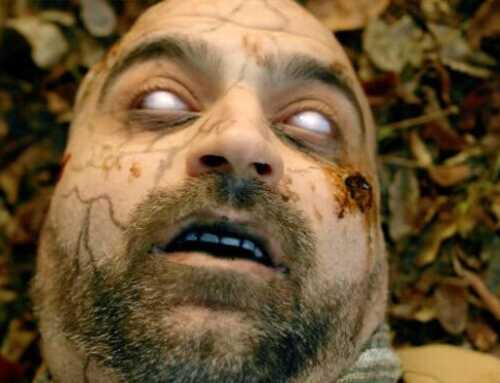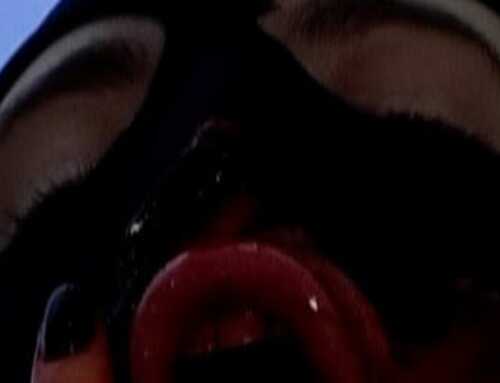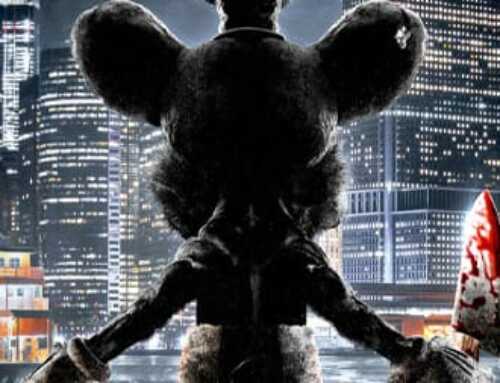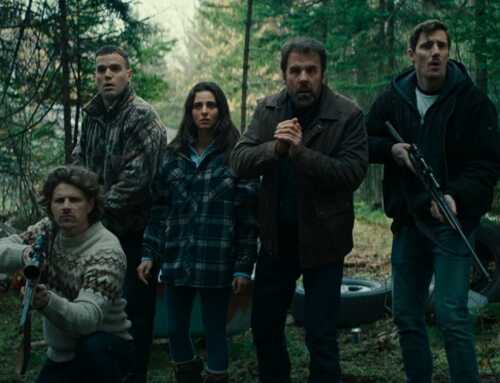In recent years, Argentina has become fertile ground in Latin America for contemporary horror films and filmmakers. Among the notable recent Argentine horror films include Terrified, Virus-32, The Last Matinee, and History of the Occult. Argentine horror talent has also influenced American horror cinema, most notably, the sister and brother duo Barbara and Andrés Muschietti, who produced and directed IT, the current highest-grossing horror film of all time.
Documenting the history and rise of contemporary Argentine horror cinema is Jonathan Risner, a professor of the department of Spanish and Portuguese at Indiana University Bloomington. His areas of cinematic expertise include Latin American cinema, Latina/o cinema, horror cinema, and film theory, especially Argentine horror. In his book Blood Circuits: Contemporary Argentine Horror Cinema, Risner explores the roots, impact, and future of contemporary Argentine horror.
Risner shares with us his journey to discovering Argentine horror, what surprised him most about it, and the influence of punk horror.
Justina Bonilla: When did you get interested in cinema?
Jonathan Risner (JR): Since I was young, I’ve liked to watch movies. That ramped up when I was about 21 or so. I started working at a public library in High Point, North Carolina that had a solid DVD collection. I worked there for about a year. There, I could take home as many movies as I wanted to. I watched a lot of movies and was able to look at other movies I might not have considered in the past. Also, I would have to credit a few friends who are cinephiles for expanding my interest and taste.
What inspired you to research horror cinema?
(JR): I’ve always been interested in horror. Around 2005, I was in graduate school, in a comparative literature program. I took a graduate course that was really exciting about memory. In my case, being in a literature program, the question of memory is usually related to collective memory. How that collective memory is built, maintained, obliterated, or fragmented. In the course, most of the material that we were reading was dealing with memory in the context of the United States, the Caribbean, and some Central Western European countries.
I noticed, in the thick of the War on Terror that was getting underway, I was interested in, as a personal interest, looking at how cinema and other audio-visual art, like television, and social media at the time, was dealing with, or not dealing with the War on Terror. At the time I noticed, and I’m not the only one to notice this, that the shows and movies that we’re dealing with the War on Terror were melodramas that usually failed at the box office.
Then, you had horror movies, the so-called torture porn movies, like Saw and Hostel. Those were wildly popular. The paradox that I saw, is that people weren’t going to these horror movies to watch politics. But at the same time, there were references. The most explicit was Hostile, where you see these jumpsuits and a place that looks like Abu Ghraib prison. There are also other allusions to things that were happening at the time. That was one trend that was starting. It was something that made me think of horror more seriously, and what it could do or not do for memory.
How did you gain an interest in Argentine horror?
(JR): I arrived at Argentine horror when I saw online in Variety an article written by Charles Newberry, an Argentine journalist, about the very low-budget horror films in Argentina, being made mostly for the North American market.
My initial reaction was, “How do you make a horror film, in a country that is not that far removed from incredible violence?” The last dictatorship was from 1976 to 1983, when 30,000 people disappeared. With Detention Centers for torture throughout the country, with one called The Popular Center of Remembrance. There is also Memory Park, a memorial to the military regime victims.
What inspired you to write the book?
(JR): In academia, it’s normal to write a book to attain tenure, in order to have job security. The primary motivation for writing this book was to explore a subject that had not necessarily been written about before and wanting to share this information. Argentine cinema is really well known for and has quite a tradition of documentary cinema, crime films, and arthouse cinema. Not a lot has been written about Argentine genre cinema. I would say that horror and science fiction, and a few other genres have emerged at the same time.
How did you begin your research in Argentina for this book?
(JR): I went to Buenos Aires for interviews, because there was not that much written about it, except for on a couple of websites. For about two weeks, I went around and tried to interview film festival programmers. Anyone I could talk to. I found out a lot there. Later, I did another trip and learned more. That’s how it started.
What initially surprised you about Argentine Horror?
(JR): I had some preconceived ideas about Argentine horror cinema, and they were wrong. I’m glad I was wrong. It made the project more interesting. In Buenos Aries, I learned a lot from talking to film people in general. They all recommended this shop called Mando Macabro, which used to be on Florida Street, in the heart of Buenos Aires. It was a fairly small store, a film mecca of sorts with DVDs, rentals, and whatnot. They had all these awesome titles. I saw all these DVD cases for movies that I read about online.
When I was in this shop, I asked the clerk if I could buy the movies or just rent them. He replied, “What you need to do is give us some money, and we’ll make pirated copies for you. Come back tomorrow.” It was this strange dynamic of circulation and commerce. These films were made for the English language markets, but they weren’t available legally in Argentina. However, once I got back to the United States, I could go on Amazon or Walmart.com and buy these movies. That’s the reality of filmmaking for some folks.
Why were so many films being made in English?
(JR): It was strange to me how a lot of their horror movies were made in English. They were made in Buenos Aires, or somewhere else in Argentina. They tried to make a part of Argentina look like a generic place in the United States. With actors and actresses, most of which are Argentine, but not all of them. Most of whom spoke English with an accent. Not all the movies were in were in English, but the idea was to make these low-budget horror films for the North American market. That was a way to make their cinema seen. The logic was, “We can attract attention and gain notoriety in markets outside of Argentina. Hopefully, that notoriety will help us in Argentina.”
The government has to have a hand in the production of commercial cinema. The INCAA (National Institute of Cinema and Audiovisual Arts) gives crucial funding to film production. If you don’t have that support, then your movie is not going to be in a commercial cinema setting. You might be able to have a movie on put out on DVD, streaming, YouTube, or show it at a festival or festivals in Argentina or in other countries. However, your movie is not going to get into a cinema. Prior to 2008/2010, Argentine horror cinema had not been supported by the government.
Did Argentina’s political history have an influence on its horror cinema?
(JR): One of the other things that was kind of surprising to me, is my expectation that Argentine horror films had to engage with past violence. At first, I thought, “How do you make these movies, if you have a tragic history?” There was a period in Argentina, known as the Dirty War from 1974 to 1983, in which people, under a military dictatorship, were being kidnapped, held in detention, and tortured. How do you make these movies where there’s somewhat of a recent past of torture and violence? The answers I got were fascinating.
Directors would say, “No, we’re not engaging with that. If there is a political motive in our movies, it’s an order to move away from a very limiting legacy.” There’s like a slew of Argentine films of different genres that engage with the dictatorship. For Argentine horror directors, most of them are making horror as a way to move away from a legacy in which cinema is inevitably engaged with past trauma. There is a movie from 2010, called Sudor Frío (Cold Sweat), I believe was the first horror film that explicitly deals with the dictatorship and its legacy. That was surprising, as well as their idea of what horror could or would do.
I would argue that sometimes academics or critics, will read politics into a popular film in order to elevate it or dignify it. That’s one way pop culture is dignified. It’s really limiting how someone watches a movie.
When would you say that contemporary Argentine horror began?
(JR): In my book, I say 1999.
What was an early influential contemporary horror film?
(JR): Plaga Zombie is a key movie. It’s a hilarious low-budget zombie film. They’re three movies, with a fourth made by some guys in Bedford, Massachusetts. It’s called Plaga Zombie: American Invasion, which is on Blu-ray.
Is there a film festival in Argentina that caters to horror and genre fans?
(JR): There is a film festival called Buenos Aires Rojo Sangre (Buenos Aires Red Blood), established in 2000. It’s one of the biggest, if not the biggest genre film festivals in Latin America. They show horror, but also other films as genres, including cine bizarro (Bazar cinema). That’s kind of a genre unto itself in Argentina.
Has INCAA influenced horror films?
(JR): From 1999 to about 2010/2012, most horror cinema was made without the support of INCAA. In 2012, certain directors begin to get support from INCAA. Director Daniel de la Vega has a number of films are made with INCAA. Other directors like Gabriel Grieco have also emerged.
There’s a stage that’s opened up a certain commercial production for commercial horror films. I don’t want to give a misconception that there’s this low-budget horror filmmaking that’s happening in the first decade of the 2000s, and then it’s all about commercial films. Low-budget horror filmmaking is still there as well.
How are these horror films, both commercial and low-budget being seen now?
(JR): These films are being streamed. That’s a larger conversation about what streaming platforms are doing for Latin American cinema, low-budget, horror, and arthouse films. Streaming is giving a platform for these films to circulate that they hadn’t had before.
How would you describe punk horror?
(JR): If you look at bands like The Misfits and White Zombie, there’s been this marriage of punk or metal with horror. When I talk about punk horror, in the case of the book, it’s a way to think about the different gradations. Inevitably, anytime you use a category or an umbrella term, nuances are going to be lost. If you talk about punk horror, there’s something different.
It was looking at these films and taking into account how these films brought something else to the forefront. How does punk figure into this? I also use different designations like underground horror and metal horror. There’s a certain kind of rawness to it. You can get that rawness with the gore, in the case of the films by Germán Magariños, who directed Sadomaster. That kind of gore that they use is very in your face. They don’t try to hide it.
In the case of movies by the punk collectives Sarna and Mutazion, and the films by Magariños, they’re not necessarily trying always to make good quality cinema. They’re trying to be offensive. That’s where the punk is. You’re making a movie or making an object of art that nevertheless remains accessible to people who are watching or hearing it. That accessibility in theory can inspire other people to make something. With these punk horror films and other low-budget projects, in these kinds of terms, where someone watches it and says, “I can do this. I’m going to do this too.” And end up making a punk film.
In the book, you talk about the pleasure of horror cinema. What is the pleasure of horror?
(JR): A narrative thread that goes throughout the book is the question, which is fascinating to think and talk about, is the pleasure of horror cinema. “What are the pleasures, or the displeasures that horror films give people?” There are times horror pushes all of our buttons. I have two kids. So, if I see violence against children, oh, boy!
In punk cinema, I think that a pleasure that you normally don’t think about with filmmaking is the pleasure of making something. With a lot of commercial cinema, many people think about the pleasures of seeing CGI Marvel characters beating each other to a pulp. That’s a pleasure. Among punk music and punk cinema, there can be a pleasure of production that can become contagious. As a result, other people start producing things themselves, which I think is cool.
Can punk horror be dignified, like other mainstream genres?
(JR): At the end of my punk horror chapter, I ask, “How do you interpret these movies?” “What do you think about these movies?” These kinds of conversations can happen with cult films. You hear about a punk horror movie or a cult film, and it has this aura around it. Then, you watch it and think to yourself, “Is this good?” “How can I dignify this?” “What does this do?”
You can dignify it in terms of production. It’s raw and accessible. You can do it too.
What would you say are some of your favorite Argentine horror movies?
(JR): Terrified directed by Damián Rugna. I also like his other films, including The Last Gateway. Rugna did a film with Fabian Forte, Malditos Sean! (Cursed Bastards). Also films from Germán Magariños and his film production company Gorevision. His films are really raw and great.
The Plaga Zombie movies by Farsa Producciones, have a lot of movies. It’s just a really fascinating story of how they started. Where these guys grew up together, more or less, in the same town outside Buenos Aires. They grew up making movies and were inspired, at least in part by Peter Jackson’s splatter gore. There’s also the production company Paura Flics.

Terrified
Adrián García Bogliano is a Spanish director working in Argentina. He’s also made movies in the United States, Sweden, and Mexico. The movies are great, low-budget, and political in a different sense. One movie, Rooms for Tourists which I write about in my book, is about abortion. That was really interesting.
Which films would you recommend to someone interested in learning about Argentine horror?
(JR): You have to start with the low-budget horror stuff in the 80s, such as Alguien te está Mirando (Somebody is Watching You) from 1988. Closer to now, the Plaga Zombie movies. Those all can be seen on YouTube. Also, the Paura Flics movies from the early 2000s. They’re making cinema outside of Buenos Aires. It’s something different and fascinating. Also, the Rugna and de la Vegas movies.
In the second decade, post-2010, you have the kind of the same names, but Grieco is a new name. There are also women making horror cinema, like Tamae Garateguy. She has some really interesting genre films. Her film Mujer Lobo (She Wolf) is one of the movies that’s easier to watch in the United States. It’s a wolf woman movie.
Also making moves is Jimena Monteoliva. She’s made four horror movies and has a production company, Crudo Films. They have some really great projects. It’s also worth noting that there are Argentine horror filmmakers working outside of Argentina, such as Bogliano and Muschietti.
Is there an established tradition of Argentine horror cinema?
(JR): You could make the claim that there has not been an established tradition of horror cinema in Argentina. In the 1920s and 1930s, horror was dismissed as a “Yankee genre” and not necessarily something indigenous to Argentina. Occasionally, you get films in the 1940s, 1950s, and 1960s that are horror, or a mix of science fiction and horror. They’re very infrequent and not necessarily sustained.
Things changed with cable and VHS tapes. In the 1980s and 1990s, kids and teenagers who are consuming these movies, then grew up wanting to make horror cinema. Consumption eventually becomes production.
What is a way that Argentina helps indie horror talent get their films made?
(JR): It’s common in Spain and in many Latin American countries, a national film agency and contest that helps to foment film production. Contests where people submit their scripts, a committee reviews the scripts, and they decide on the winner/winners. There can be a number of different projects that they fund.
In 2015, if memory serves correctly, the Argentine National Film Production Agency, started to have funds that are reserved for gore films/horror films. They want these genres and projects with the possibility of a transnational collaboration. They want projects that are going to be made in collaboration with a company in Spain, the United States, Mexico, etc. because you can export horror.
How is exported horror accepted by foreign audiences, such as the American horror audience?
(JR): You can export horror really well. American filmgoers, for the longest time we’re known for not liking subtitles, except horror fans. If there’s somebody getting chopped, we’re gonna watch it.
With film agencies understanding that horror can be exported, more and more horror films are being made. They’re being made on the scale of commercial production. That’s not to say that people are lining up and breaking down the cinema doors to see horror movies. But, at the very least, they’re getting made and going on streaming platforms like Netflix, making their way through the globe. There’s also the festival circuit, which is a whole different thing.
The boutique distributors and the Argentine government helped to run a pitch event called Blood Window, which operates in Buenos Aires. With the help of the government and other private companies, there’s this emphasis on making horror films. Blood Window has been operating for years. It’s sustained and growing.
Do you feel that Argentine horror is gaining more traction and appreciation internationally?
(JR): Terrified is on a lot of people’s lists, which is amazing. Before that, every now and then, you’d hear something about Plaga Zombie, or a film by Grieco, Nicanor Loreti, the Onetti Brothers, Bolgiano, or Valentín Javier Diment.
I think about horror cinema from different countries or regions and this idea that it’s arrived. Depending on who you talk to, somebody might say, “We need that good movie that’s gonna put Argentine horror on the map. In some ways that’s a possibility. Who am I to say?
However, I believe that sustained production and presence also work in the favor of Argentine horror. That there’s a movie, and then another, and another. It might not be Pan’s Labyrinth, but at the same time, it has a presence. It’s the quantity of movies that are being made at a sustained rhythm.
One Comment
Comments are closed.










[…] Justina Bonilla Source link […]